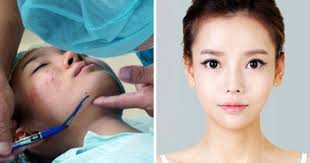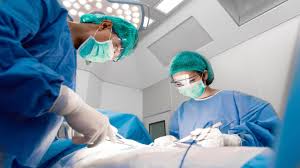The Most Dangerous Types of Plastic Surgery
Plastic surgery procedures are nothing new. In fact, the American Society of Plastic Surgeons reported for 2014 that 15.6 million cosmetic procedures, including minimally-invasive and surgical, were performed in the U.S. — a 3% increase since 2013. Additionally, 5.8 million reconstructive surgery procedures were performed in 2013, up 1% the following year. Despite the risks that come with any surgery, some plastic surgery procedures are more risky than others, especially those involving multiple areas of the body or surgery on very complex or sensitive areas. Here is a look at three plastic surgery procedures that put you at the most substantial risk of harm if you have them done.
Body lift
The body lift is among the riskiest of plastic surgeries and is a prime example of multiple surgeries being performed at once, which results in greater risk. The body lift involves lifting the belly, thighs, buttock, and genitals all at once to improve the shape and tone of the underlying tissue that supports fat and skin. A body lift benefits those who have lost a lot of weight by removing excess sagging fat and skin that can improve a dimpled, irregular skin surface, known as cellulite.
Safety concerns
One of the biggest concerns of the procedure is the risk associated with extended time under general anesthesia. The longer a patient is under, the greater the risk for cardiovascular complications and the longer the recovery period. Phillip Haeck, M.D., a board-certified plastic surgeon in Seattle and chairman of the ASPS Patient Safety Committee, tells New Image that while there isn’t a time limit per se, being under anesthesia for longer than five to seven hours can bring on an increased rick for recovery — specifically when two major invasive procedures, like liposuction and abdominoplasty, are combined.
Liposuction
Some tend to think of liposuction, or “lipo,” as a quick fix that can easily substitute proper diet and exercise — but they are very wrong. Liposuction reshapes and slims different areas of the body by removing excess fat depositions while improving your body contours and proportion. The procedure may be used to reduce localized fat deposits of the abdomen and waist, thighs, chest area, hips, buttocks, and so on.
Safety concerns
It’s yet another risky plastic surgery procedure that can cause some serious complications, such as systemic infections, perforation in the stomach wall, blood clots, and fat clogs in the lungs. You also run the risk of having uneven, bumpy skin after surgery. It can be performed with other plastic surgery procedures as well, such as a tummy tuck, which carries its own risks.

Facial Reconstruction Surgeries (Especially Those Involving The Jaw)
Facial reconstructive surgeries usually involve several areas being treated at once and are very complex procedures. If celebrities are any indication, extreme facial procedures can have a dramatic impact on one’s appearance — and not always in a good way. While some reconstruction procedures are elective, meaning that the choice to have them is more for vanity reasons, some are performed after a trauma, surgery, or illness that can leave a person malformed. The face can be affected in appearance and function and expert surgeons can rebuild major structures of the face and help to reshape them as closely as possible to one’s original appearance.
Some reconstructive procedures include facial reanimation, nose reconstruction, skull base, and facial trauma treatment to name a few, but one of the more dangerous is surgery involving the jaw. It’s called orthognathic surgery and is particularly delicate because several important blood vessels sit below the jawbone.
Before you have any procedure done, make sure you do your research to make sure the surgeon is certified, and be aware of the risks of having surgery.

Where is the cheapest country to do plastic surgery with cheapest price but best and professional result?
While I personally have not had work done overseas many many many of the ladies and male stews I regularly fly with go outside the US for all all plastic surgery procedures known to man. The hot spots and from what I see are fabulous results from facial plastic surgery to boobs to all over body procedures are Lima Peru and Ecuador. Also the pricing for plastic surgery is a fraction of what we pay in the states. For the best facial injections and dermal fillers, they place to go is Seoul Korea. If your into the big booty bubble butt trend aka butt injections or implants, head down to South America. Rio de Janeiro or São Paulo Brazil where its all about the butt. As you can see with a trip to Ipanema Beach in Rio. Brazilian butt procedures in Rio or São Paulo are again, a small fraction of the price you’d pay in the US- plus you get stellar results.

Financing plastic surgery
If you are considering plastic surgery, here are some payment methods to explore:
Medical credit cards
Medical credit cards are the latest wrinkle in borrowing for beauty. Business is booming for the cards, which are limited to covering only medical expenses and are often offered as a financing option to cosmetic surgery patients.
Regular credit cards
You can use an existing low-interest credit card or apply for a new card with a 0 percent introductory period to pay for the procedure(s).
Pros: Assuming the card has a reasonable interest rate, this can be an affordable way to pay for the surgery while you maintain or even build your credit.
Cons: A large purchase such as cosmetic surgery can tie up your credit line and reduce your credit utilization ratio (which in turn may lower your credit score) initially.
Bank loan
Another option: A personal loan from your local bank or credit union.
Pros: While the interest rates on an unsecured loan from a financial institution run close to or more than those on credit cards (depending on your creditworthiness and ability to qualify, of course), bank loans have fixed interest rates and a fixed amount of time in which to repay. Plus, if you’ve never taken out a personal loan before, it can boost your credit rating by adding to your “credit mix.” Of course, you still need to make on-time payments until the repayment term is complete. And, unlike a credit card, you won’t be allowed to add more to the balance and dig yourself deeper in debt.
Cons: Unsecured loan interest rates can add quite a bit to the final cost (in interest charges) of your elective procedure. The rates are usually similar to credit card rates, and will vary with the borrower’s creditworthiness.
Advice: For a lower interest rate, you may want to ask about a secured loan (where you offer up collateral against the loan, such as a car or house), although if you end up being unable to make the payments, you risk losing that property.
Home equity loans and lines of credit
These are loans against the equity of your house, with interest based on current mortgage rates.
Pros: Can be easily accessible for homeowners and affordable as mortgage rates remain low. Plus, interest is tax-deductible for most people.
Cons: An uncertain housing and job market means that you could be left holding your hat should you be forced to sell your home — or if interest rates take an unexpected jump.
Cash savings
Money in the bank, not earmarked for emergencies.
Pros: You don’t have to borrow or pay interest.
Cons: Your savings decrease.
Unsecured medical loans
These loans, which can come in the form of personal loans or credit cards, and are often brokered through third parties, such as doctors or brokers.
Pros: If you have a low credit score and have trouble finding other sources of financing, this can be a viable option.
Cons: Interest rates tend to be high or can balloon after an attractive introductory offer. If you have a co-signer and default on the loan, that person’s credit will be damaged and on the hook for repayment — not to mention the hit your relationship may suffer.
Advice: Shop around for the best deal. As always, read the fine print, and consider whether financing cosmetic surgery at a high interest rate is truly within your financial goals.